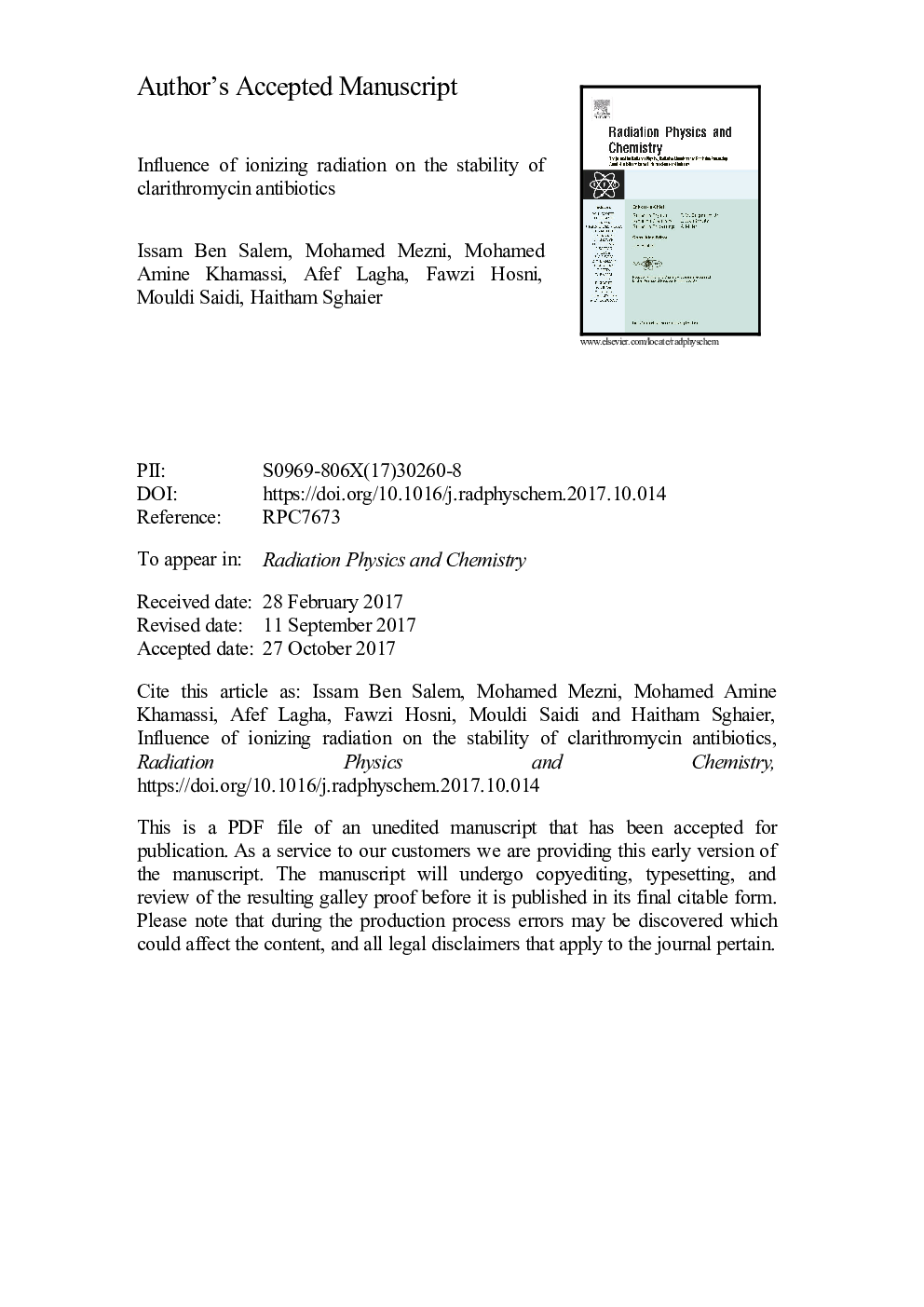| Article ID | Journal | Published Year | Pages | File Type |
|---|---|---|---|---|
| 8251709 | Radiation Physics and Chemistry | 2018 | 23 Pages |
Abstract
The growing interest centered on treatment of pharmaceuticals by ionizing radiation arises from the clear advantages this process offers compared to other methods of sterilization. In this study, the effect of ionizing radiation on clarithromycin (CLA) powder commercially named Zeclar® was investigated. The analysis by HPLC confirms the stability of Zeclar® potency at 2, 5 and 25Â kGy and no degradation products were observed. The anti-microbial assays revealed that the activity of irradiated clarithromycin at 2 and 5Â kGy did not reduce against Staphylococus aureus ATCC 6538, Streptocoque B (Streptococcus agalactiae) Enterococcus feacium ATCC 19434 and Helicobacter pylori ATCC 43504 and stable during 30 days storage period. However, at 25Â kGy, the antimicrobial activity of CLA was significantly reduced. The analysis of impurities by HPLC after irradiation at 5Â kGy showed an acceptable impurity level as the content limit described by the European and United States Pharmacopeia. On the contrary, an unacceptable increase of single impurity was evidenced after irradiation at 25Â kGy. Therefore, CLA is radiosensitive. After gamma irradiation, complex EPR lines were recorded confirming the presence of a large number of free radicals formed during the irradiation. Approximately 61 days after the irradiation of Zeclar®, the radical concentration decreased by 85% % and 95% respectively for 5 and 2Â kGy. Numerical analysis of the time dependence of the integral amplitude of the measured EPR lines demonstrated good agreements between the experimental points and the properly fitted exponential first order function.
Related Topics
Physical Sciences and Engineering
Physics and Astronomy
Radiation
Authors
Issam Ben Salem, Mohamed Mezni, Mohamed Amine Khamassi, Afef Lagha, Fawzi Hosni, Mouldi Saidi,
